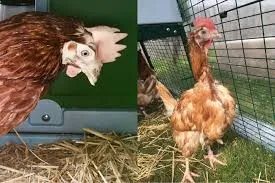Exploring the Benefits and Best Practices of Layer Houses for Poultry Farming Success
Aug . 14, 2024 12:11 Back to list
Exploring the Benefits and Best Practices of Layer Houses for Poultry Farming Success
The Role of Layer Houses in Poultry Farming A Comprehensive Overview
Layer houses are specialized poultry housing systems designed primarily for raising laying hens, the prolific egg-layers that are vital to the poultry industry. With the increasing global demand for eggs as a source of nutrition and income, layer houses play a critical role in optimizing production while ensuring animal welfare and environmental sustainability.
Design and Structure
A layer house is typically designed to provide a comfortable, safe, and efficient environment for laying hens. These structures can vary significantly in size and configuration, depending on the scale of the operation. Most modern layer houses utilize either conventional systems or cage-free systems. Conventional systems often feature battery cages that house multiple hens in a controlled space, while cage-free systems allow hens to roam more freely within a large indoor area.
Layer houses are equipped with essential amenities such as ventilation systems, climate control, feeding and watering systems, and egg collection mechanisms. Proper ventilation is crucial to maintaining a healthy environment, as it helps regulate temperature and humidity levels, thus reducing the risk of respiratory diseases and promoting overall bird health.
Importance of Biosecurity
Biosecurity is a fundamental aspect of managing layer houses. Effective biosecurity measures help prevent the introduction and spread of diseases that can devastate flock health and production. Poultry producers implement various strategies, such as controlling access to the layer house, maintaining cleanliness, and monitoring flock health. These practices minimize the risk of disease outbreaks, ultimately leading to improved productivity and food safety.
Welfare Considerations
layer house in poultry

Animal welfare is a growing concern in poultry farming, particularly regarding the living conditions of laying hens. Public perception and advocacy for more humane treatment of farm animals have prompted many producers to transition from conventional cage systems to more welfare-friendly alternatives, such as enriched cages or cage-free systems.
These newer systems provide hens with more space, perches, and nesting boxes, allowing them to exhibit natural behaviors. Research indicates that hens in enriched environments can experience reduced stress and improved overall well-being, which can also translate to better egg production and quality.
Production Efficiency and Sustainability
Layer houses are crucial in maximizing production efficiency. By providing optimal living conditions, farmers can achieve higher egg yields per hen, which is essential for meeting the demands of a growing population. Furthermore, modern layer house designs often incorporate advanced technology, such as automated feeding and egg collection systems, which significantly reduce labor costs and enhance operational efficiency.
Sustainability is another important consideration in the management of layer houses. Poultry farming is under scrutiny for its environmental impact, particularly concerning waste management. Innovative practices, such as using poultry litter as fertilizer or converting waste to energy, are being increasingly adopted. Additionally, producers are exploring plant-based feed sources that minimize reliance on conventional grain, thereby reducing the carbon footprint of egg production.
Conclusion
Layer houses play a pivotal role in the poultry industry, balancing the dual challenges of high production demands and animal welfare concerns. As technology advances and societal expectations evolve, layer house designs and management practices are likely to continue transforming, aiming to provide both a sustainable food source and a humane living environment for hens. By embracing innovation and best practices, poultry producers can ensure the future viability of layer houses and the egg production industry as a whole.
-
High Performance Exhaust Fan – Efficient Ventilation Solutions for Home
NewsJun.10,2025
-
High-Quality Gestation Pen for Sows Durable Mobile Pig Pen & Simple Pig Pen Solutions
NewsJun.10,2025
-
High Quality Rabbit Cage Double Tier Designs & Welded Wire Mesh Supplier
NewsJun.10,2025
-
Floating Fish Feed Machine - High Efficiency Floating Fish Feed Extruder for Small Scale Production
NewsJun.10,2025
-
Premium Poultry Housing Solutions Mobile & Commercial Free Range Options
NewsJun.10,2025
-
Industrial FRP Fans Corrosion-Resistant Blades & Centrifugal Systems
NewsJun.09,2025






